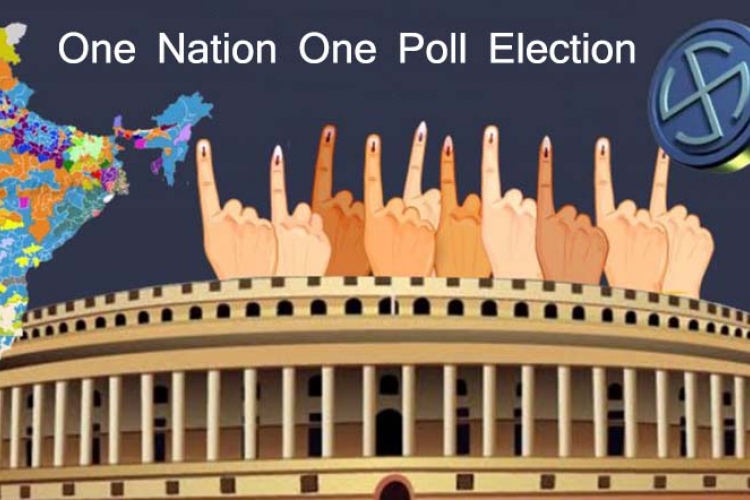In a significant development, former President Ram Nath Kovind has reignited the debate around One Nation, One Poll (ONOP), a concept he believes could transform India’s political and economic landscape. Speaking informally after a holy dip at the Kumbh Mela, Kovind expressed hope for ONOP becoming a reality soon. His remarks carry weight, as he chaired the high-profile panel that consulted stakeholders and submitted a comprehensive report on the subject not long ago. As India braces for the upcoming Budget Session on January 31, speculation is rife that the Modi government may introduce the ONOP Bill. This follows the missed opportunity during the Winter Session, which was disrupted by protests over the Hindenburg report targeting the Adani Group. The Congress, initially spearheading the protests, saw its allies like the Trinamool Congress (TMC) and Samajwadi Party withdraw support for blocking parliamentary proceedings, underscoring the fragility of opposition unity. Against this backdrop, Kovind’s statement hints at the government’s determination to push forward with ONOP. Critics of ONOP argue that synchronizing elections for Lok Sabha and state assemblies undermines federalism. However, Kovind and key economists like Arvind Panagariya and N.K. Singh presents a compelling counter-narrative. Panagariya, former Vice Chairman of NITI Aayog, highlights that frequent elections hinder governance by forcing governments into a perpetual campaign mode. He asserts that ONOP could free up critical bandwidth for policymaking and long-term reforms, avoiding distractions caused by-elections held “every second day.”

Similarly, Singh points to the immense economic cost of staggered elections, calling them a wasteful expenditure. Holding multiple elections across the country incurs significant financial and administrative resources, which could instead be redirected to developmental priorities. Kovind’s statement aligns with favorable political winds. The BJP-led NDA has an opportunity to champion ONOP amidst diminished opposition cohesion. Moreover, the timing appears ripe as global narratives shift. The shelving of Hindenburg operations coincides with Donald Trump’s renewed political ascent in the U.S., raising questions about deep-state actors and their influence. While unrelated on the surface, these geopolitical dynamics could embolden the Modi government to assertively pursue its agenda. ONOP proponents emphasize the transformative potential of synchronized elections. By reducing the frequency of electoral cycles, the government can focus on governance, implement structural reforms, and promote economic stability. For instance, Panagariya points out that the government’s ability to bring significant reforms is often stalled by the fear of political fallout during election seasons.
The formation of a Joint Parliamentary Committee (JPC) to review the ONOP Bill signifies a serious push to institutionalize this reform. With 27 Lok Sabha members and 12 from the Rajya Sabha, the JPC will deliberate on the proposal’s nuances, balancing the needs of a federal democracy with the promise of streamlined governance. ONOP represents a bold step toward reducing electoral inefficiency and fostering stability in India’s political ecosystem. While challenges remain, particularly concerns about federalism and consensus among states, the potential economic and governance benefits are hard to ignore. Kovind’s endorsement and expert support underlines the urgency of this reform, making it a critical issue to watch as the Budget Session unfolds. Whether India seizes this moment to implement ONOP could shape its economic and political future for decades to come. That being said, it is now a testing time for Congress and its allies to take a definitive stand and address apprehensions—especially those of the ruling BJP, which views the opposition as a stumbling block to the country’s overall economic growth. Notably, Kovind also emphasized that if ONOP becomes a reality, India could surpass expectations—not just becoming the world’s third-largest economy by 2047 but potentially securing the second position, driven by robust GDP growth.






